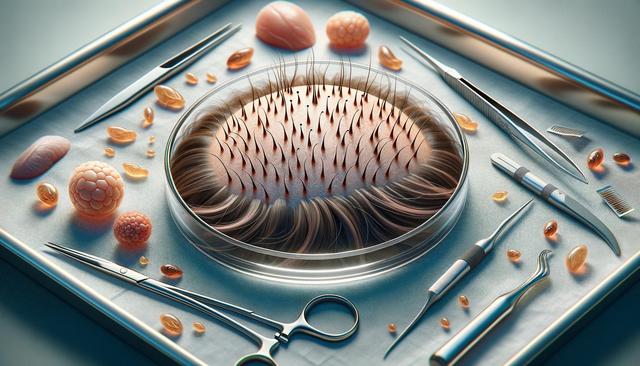
Understanding Hair Transplant Procedures in the USA
What Is a Hair Transplant and How Does It Work?
Hair transplant is a surgical technique that involves moving hair follicles from one part of the body, commonly the back or sides of the scalp, to areas with thinning or no hair. This procedure is typically used to treat male and female pattern baldness but can also address thinning eyebrows, beard patches, or hair loss from injury. The most common methods include Follicular Unit Transplantation (FUT) and Follicular Unit Extraction (FUE). Each method has its own approach to extracting and transplanting hair follicles.
In FUT, a strip of scalp with healthy hair follicles is removed and divided into grafts, which are then implanted in the balding area. FUE, on the other hand, involves extracting individual follicles directly from the scalp and implanting them. Both methods require careful planning and skilled execution to ensure natural-looking results. Recovery times can vary, but most patients return to normal activity within a few days to a week.
Why People Choose Hair Transplants in the USA
There are several reasons why individuals opt for hair transplants in the USA. One of the primary factors is access to highly trained and experienced professionals. American hair restoration clinics often use advanced technologies and offer a high standard of care, which contributes to favorable outcomes. Additionally, the availability of board-certified surgeons and regulated medical facilities adds a layer of trust and safety for patients.
Other reasons include:
- Wide range of options for techniques and procedures
- Personalized treatment plans
- Convenient access to post-operative care and follow-ups
- Clear guidelines on patient rights and medical accountability
The decision to undergo a hair transplant is often influenced by both aesthetic goals and psychological well-being. Many individuals report improved self-confidence and satisfaction with their appearance following the procedure.
Preparing for a Hair Transplant Procedure
Preparation is key to a successful hair transplant. Before the procedure, patients typically undergo a detailed consultation to determine the most suitable approach based on their hair type, pattern of loss, and expectations. Medical history and scalp condition are also evaluated to ensure the patient is a good candidate for surgery.
Some common steps in preparation include:
- Avoiding certain medications and supplements that may increase bleeding
- Refraining from alcohol and smoking prior to surgery
- Washing the hair and scalp thoroughly on the day of the procedure
- Arranging for transportation, as driving immediately after the surgery is not advised
Patients are also advised to discuss their concerns and ask questions during the consultation phase. Being well-informed contributes to a smoother process and realistic expectations.
Aftercare and Recovery Process
Post-operative care is crucial in achieving the desired results from a hair transplant. Most patients experience mild swelling and discomfort, which can be managed through prescribed medications. The transplanted area should be kept clean and protected from sun exposure and physical trauma during the early stages of recovery.
Key aftercare tips include:
- Sleeping with the head elevated during the first few nights
- Using a gentle shampoo after a few days as recommended by the surgeon
- Avoiding strenuous activities that could cause sweating or increase blood flow to the scalp
- Following up regularly with the clinic to monitor healing and hair growth progress
Hair shedding from the transplanted follicles is common within the first month, a normal part of the growth cycle. New growth typically begins within three to four months, with visible results becoming more noticeable around six months to one year post-surgery.
Cost and Considerations When Choosing a Clinic
The cost of a hair transplant in the USA can vary widely depending on factors such as the technique used, the number of grafts required, the clinic’s location, and the surgeon’s expertise. While prices can be significant, many clinics offer payment plans or financing options to make the procedure more accessible.
When selecting a clinic, it’s important to consider:
- The credentials and experience of the surgical team
- Patient reviews and before-and-after photos
- Transparency in pricing and procedure details
- Availability of consultations and personalized treatment planning
Choosing a reputable clinic ensures not only better results but also a safer and more comfortable experience. Prospective patients are encouraged to research thoroughly and consult multiple providers before making a decision.
Conclusion: Making an Informed Decision
Hair transplant procedures in the USA offer a reliable and effective option for those seeking to address hair loss. With access to skilled professionals, advanced techniques, and comprehensive aftercare, individuals can achieve natural-looking results that enhance both appearance and confidence. As with any medical procedure, doing thorough research and consulting with qualified specialists is essential. For those considering a hair transplant, understanding the process from consultation to recovery is the first step toward making an informed and confident decision.


